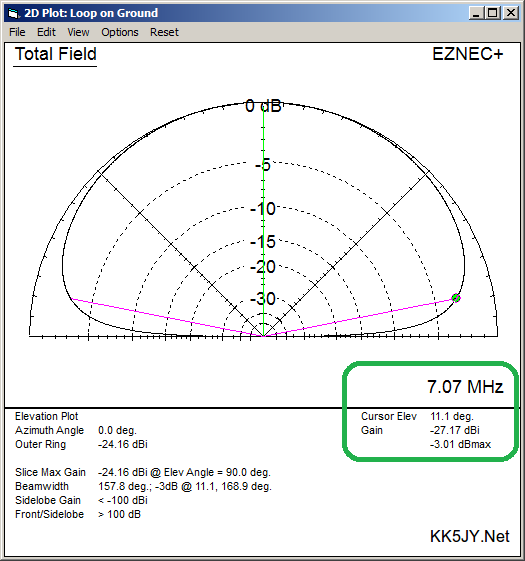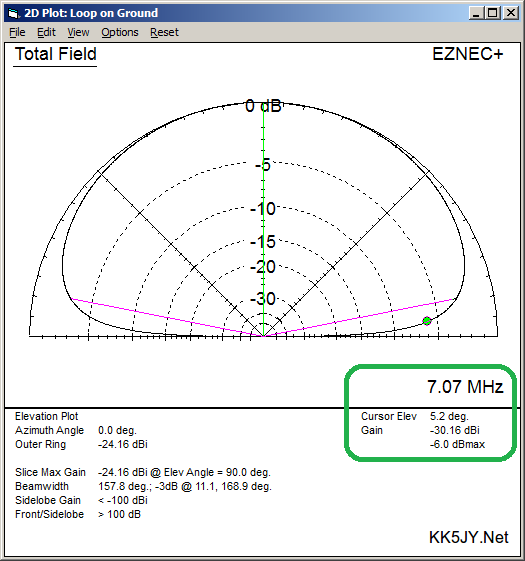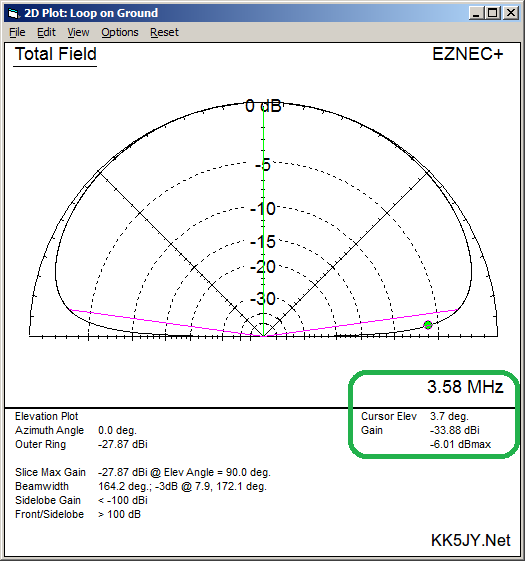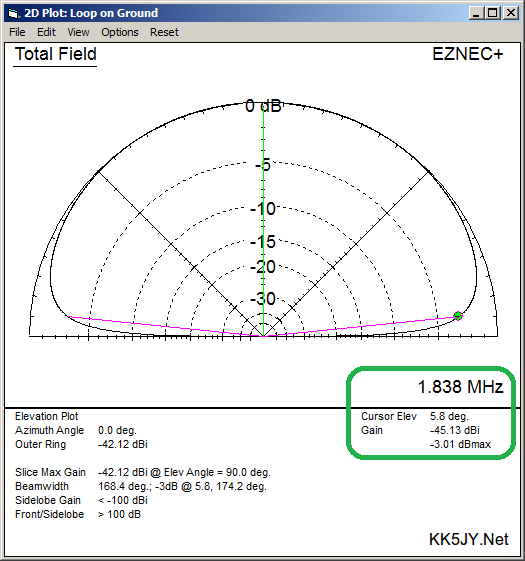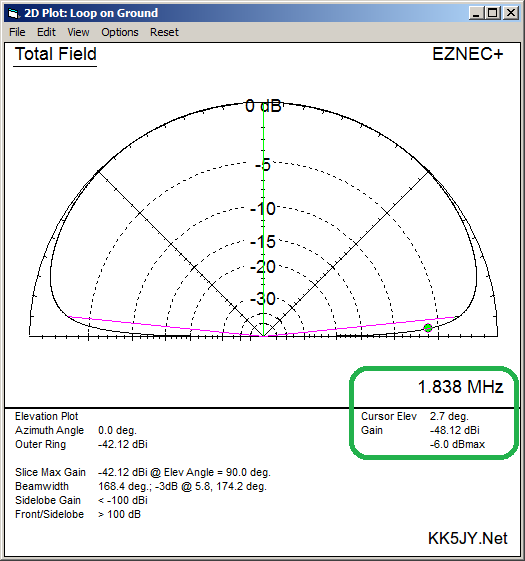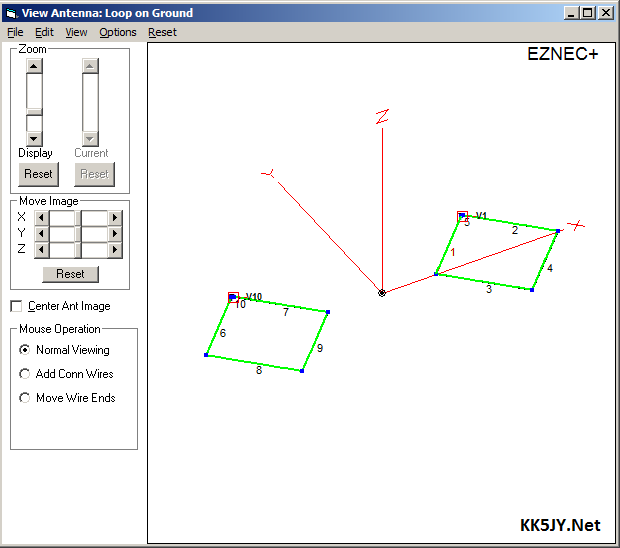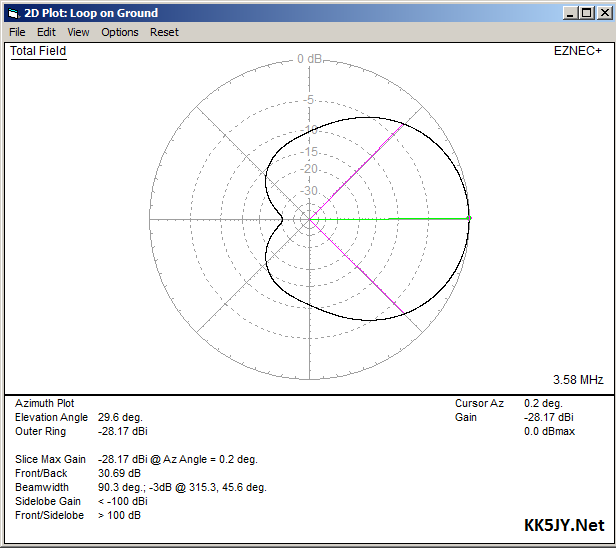Testing the Loop-on-Ground with Real Signals
In a recent
RTTY contest, I watched as a friend did
a CQ run on
40m. He was using a full-size 33' 40m vertical at his station, which
has similar ground elevation to mine. Since our stations are also within a few miles of
each other, this allowed me to watch him work several stations in quick succession, while
I observed his run on the LoG antenna. In order to compare the receive performance
of the two, I watched to see how many stations he could hear on the vertical that I could
not hear on the LoG, and
vice versa.
The vast majority of stations that he worked were also perfectly copied on the LoG.
There was one station that he heard that was marginal copy on the LoG. Surprisingly,
there were several stations that I could copy perfectly on the LoG that he never heard on
his vertical. He called CQ, and they answered him, but he just couldn't hear them.
I looked up those stations to find their location, and
none of them were inside
the skip zone, or anywhere near it. In fact, the stations he was missing were all
on the order of 1,000 to 1,500 miles away from him. Because of the pattern differences
at high angles, you would expect the LoG to hear close-in stations better than the vertical,
but these were not
NVIS signals.
These were low-angle skywave signals that the LoG simply heard better than the vertical.
So at least for this one test, the 15' square LoG antenna actually pulled in more stations on
receive than his full-size vertical antenna on 40m. When we both switched to 80m, I was
able to copy several stations, while he couldn't hear anybody.
Since then, the
LoG has acquitted itself nicely in several
80m and
160m
contests. The recieved S/N ratio often looks better than 15m on my hexbeam, and
screen captures of the panadapter can be seen at right. The top image is from a
160m CW contest, and the other is from an 80m RTTY contest (click to enlarge).
The
LoG serves as the sole receive antenna for these bands, driving both the
TS-590SG and an SDR dongle used as a pandapter. The antenna produces enough
signal to "set the noise" in both the panadapter and the transceiver, even
with the 3dB splitter loss.
Not only am I able to work contests despite my challenging suburban RF environment,
I greatly enjoy listening to clean and low-noise CW and RTTY for the long hours of
contest operation. The
LoG easily hears stations at all distances, from
a few miles to many hundreds of miles, all with similar S/N levels.
Contest operation is one thing, but I also decided to take advanatage of all the recent
FT8 activity to test the antenna on normal HF traffic. On a random July evening,
I used a
RTL-SDR
connected to the loop-on-ground to listen to
40m traffic overnight. The
RTL-SDR is a very inexpensive and popular reciever, but it is not well known as a
high-performance device. My hope was to demonstrate what could be
done with the
LoG when paired with an "average" receiver.
The resulting 24-hour map is shown below:
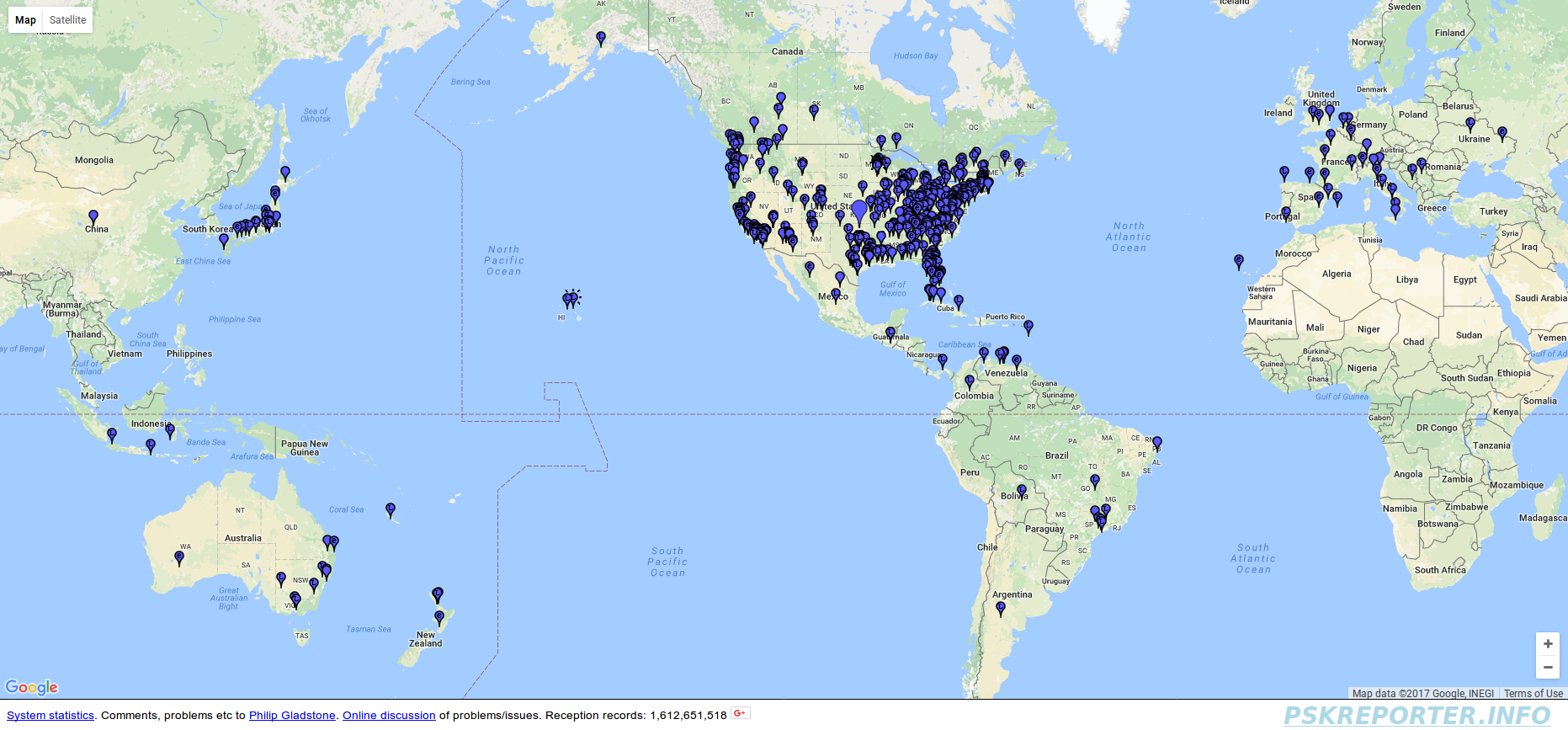
The antenna not only pulled in dozens of US stations at all distances, but it was able
to hear DX from Japan, Australia, Europe, South America, and even China. Japan alone
produced over two dozen spots.
The JT-mode activity on
80m isn't nearly as crowded as 40m, but
a recent 24-hour map of the same three modes on 80m
showed that the antenna has solid coverage across North America, with DX coverage into
Europe, Japan, South America, South Africa, Australia and the South Pacific.
I am starting to hear from people who are using larger
LoG antennas for reception
on the new
630m band with results that are similar to my tests on 40m, 80m, and 160m.
The performance of the antenna is clearly up to the task of both DX and domestic HF
reception, even with the most modest of receivers.




